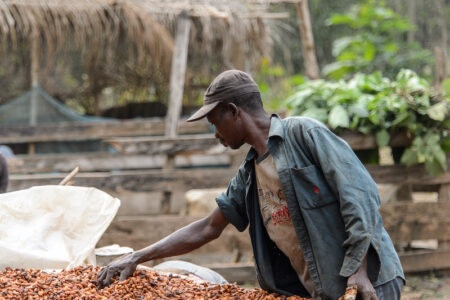Latest ILO and UNICEF studies find troubling rise in global child labour

Levels of global child labour have increased considerably in the past for years, by 8.4 million, to 160 million worldwide, according to studies by the International Labour Organisation and UNICEF, reports Neill Barston.
The organisations released their latest findings, which indicate the coronavirus pandemic has worsened the situation for many communities around the world, as many rural economies face major financial pressures with agricultural produce – including cocoa supplies facing especially challenging trading conditions.
With 2021 being the UN’s year of eliminating child labour, as previously reported by Confectionery Production some of the confectionery sectors biggest supply chain nations in West Africa (Ghana and Ivory Coast), continue to face significant problems on the issue, with around 1.5 million minors reportedly involved with hazardous labour, despite ongoing industry and government voluntary initiatives to tackle the issue.
The situation, which was again highlighted on World Against Child Labour Day (on June 12) has recently led to charities and organisations in the industry to renew calls for mandatory due diligence. This was underlined by confectionery groups joining with other sectors last week in welcoming firm legislation on the issue in Germany, which is hoped will prove the blueprint for full EU combined policies being brought forward in delivering legally-binding child monitoring systems.
In addition, a Global Civil Society Statement on Child Labour released last week was signed by organisations including Fairtrade, Indigenous Women Empowerment Network, the US-based Child Labour Coalition, Oxfam, Solidaridad, and environmental campaign groups such as Mighty Earth. This week has consequently been designated a ‘week of action’ by the ILO, as it calls on industry to continue playing a central role in tackling the issue.
The statement read: “This year should have been a landmark in the fight against child labour in cocoa. Instead, the cocoa sector as a whole has been conspicuously quiet on this topic.
“Child labour is still a reality on West African cocoa farms, and there is strong evidence that forced labour continues in the sector as well. Recent reports – such as Ghana’s GLSS 7 survey and the study of the University of Chicago commissioned by the United States government – show that close to 1.5 million children are engaged in hazardous or age-inappropriate work on
cocoa farms in Ghana and Cote d’Ivoire.
“The vast majority of these child labourers are exposed to the worst forms of child labour, such as carrying heavy loads, working with dangerous tools, and increasing exposure to harmful agrochemicals. after two decades of rhetoric, voluntary initiatives, and pilot projects, it is clearer than ever that ambitious, sector-wide action is needed, coupled with binding regulations, to address both child labour and the poverty that lies at its root.”
Latest study
As UNICEF’s latest figures revealed, progress to end child labour has stalled for the first time in 20 years, reversing the previous downward trend that saw child labour fall by 94 million between 2000 and 2016.
The report points to a significant rise in the number of children aged 5 to 11 years in child labour, who now account for just over half of the total global figure. The number of children aged 5 to 17 years in hazardous work – defined as work that is likely to harm their health, safety or morals – has risen by 6.5 million to 79 million since 2016.
“The new estimates are a wake-up call. We cannot stand by while a new generation of children is put at risk,” said ILO Director-General Guy Ryder. “Inclusive social protection allows families to keep their children in school even in the face of economic hardship. Increased investment in rural development and decent work in agriculture is essential. We are at a pivotal moment and much depends on how we respond. This is a time for renewed commitment and energy, to turn the corner and break the cycle of poverty and child labour.
Speaking on the week of action, Alexander Ferguson, of the World Cocoa Foundation, believed that progress was being made on the issue.
He said: “Child labor has no place in the cocoa supply chain and leading chocolate and cocoa companies are committed to increasing the coverage of systems to fight child labor to 100% by 2025, from about 20% in 2019, in their direct supply chains in Côte d’Ivoire and Ghana.”



